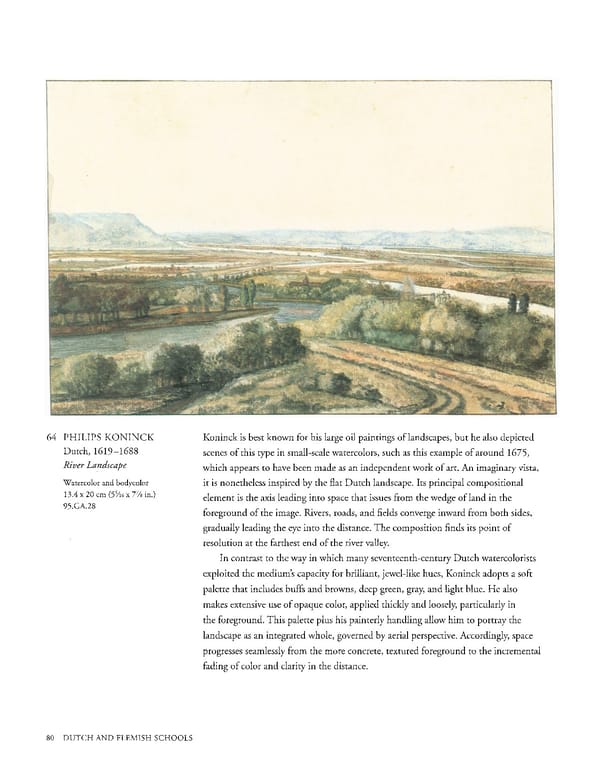64 PHILIPS KONINCK Koninck is best known for his large oil paintings of landscapes, but he also depicted Dutch, 16191688 scenes of this type in smallscale watercolors, such as this example of around 1675, River Landscape which appears to have been made as an independent work of art. An imaginary vista, Watercolor and bodycolor it is nonetheless inspired by the flat Dutch landscape. Its principal compositional 13.4 x 20 cm (5 5/16 x 7 in.) element is the axis leading into space that issues from the wedge of land in the 95.GA.28 foreground of the image. Rivers, roads, and fields converge inward from both sides, gradually leading the eye into the distance. The composition finds its point of resolution at the farthest end of the river valley. In contrast to the way in which many seventeenthcentury Dutch watercolorists exploited the medium's capacity for brilliant, jewellike hues, Koninck adopts a soft palette that includes buffs and browns, deep green, gray, and light blue. He also makes extensive use of opaque color, applied thickly and loosely, particularly in the foreground. This palette plus his painterly handling allow him to portray the landscape as an integrated whole, governed by aerial perspective. Accordingly, space progresses seamlessly from the more concrete, textured foreground to the incremental fading of color and clarity in the distance. 80 DUTCH AND FLEMISH SCHOOLS
 Masterpieces of the Getty Museum: Drawings Page 80 Page 82
Masterpieces of the Getty Museum: Drawings Page 80 Page 82